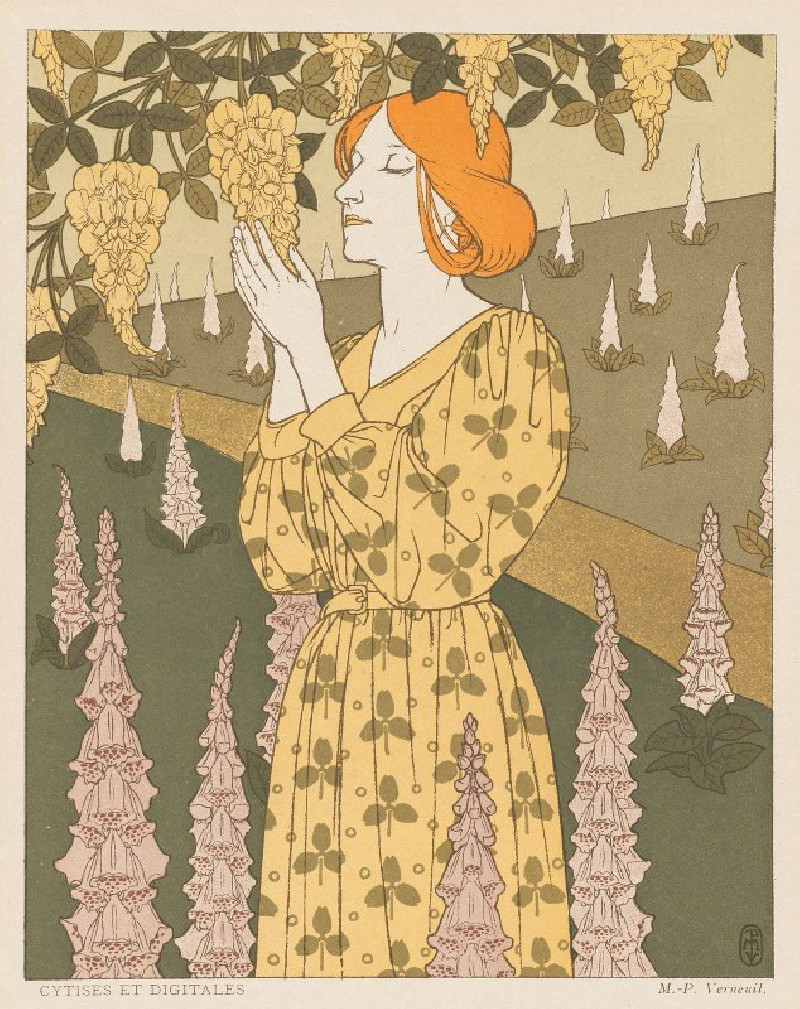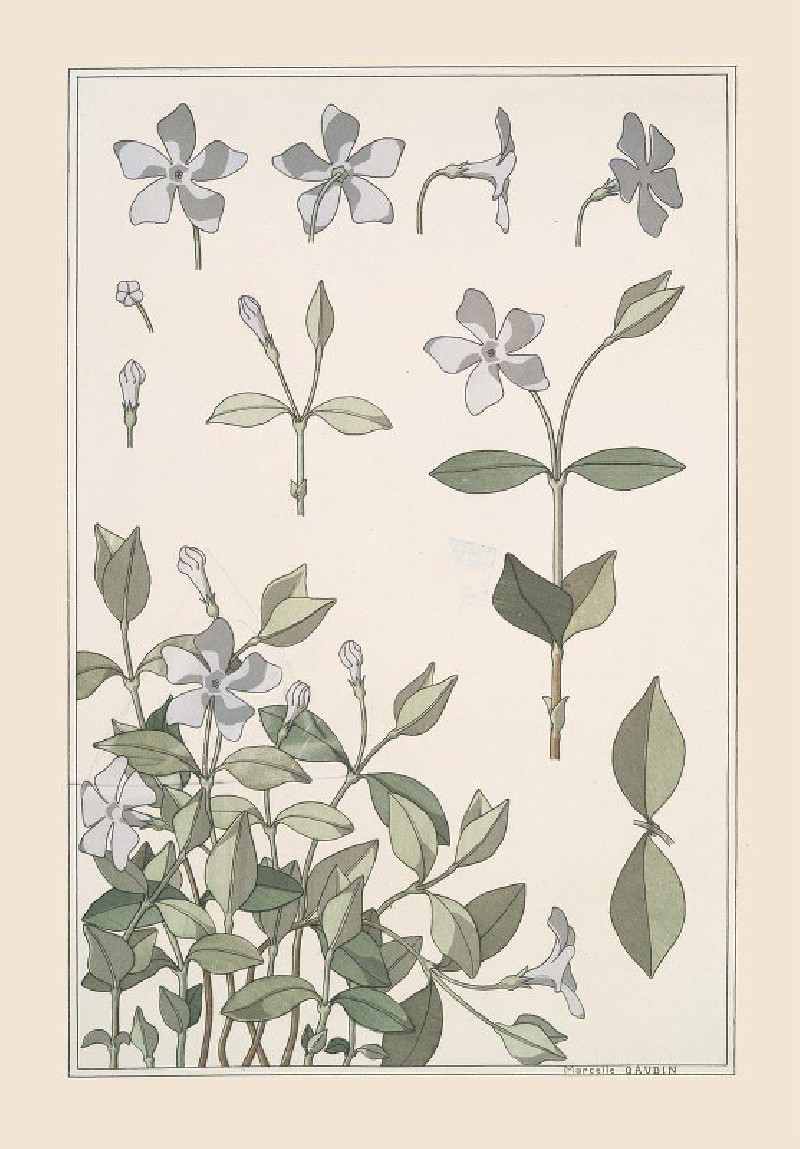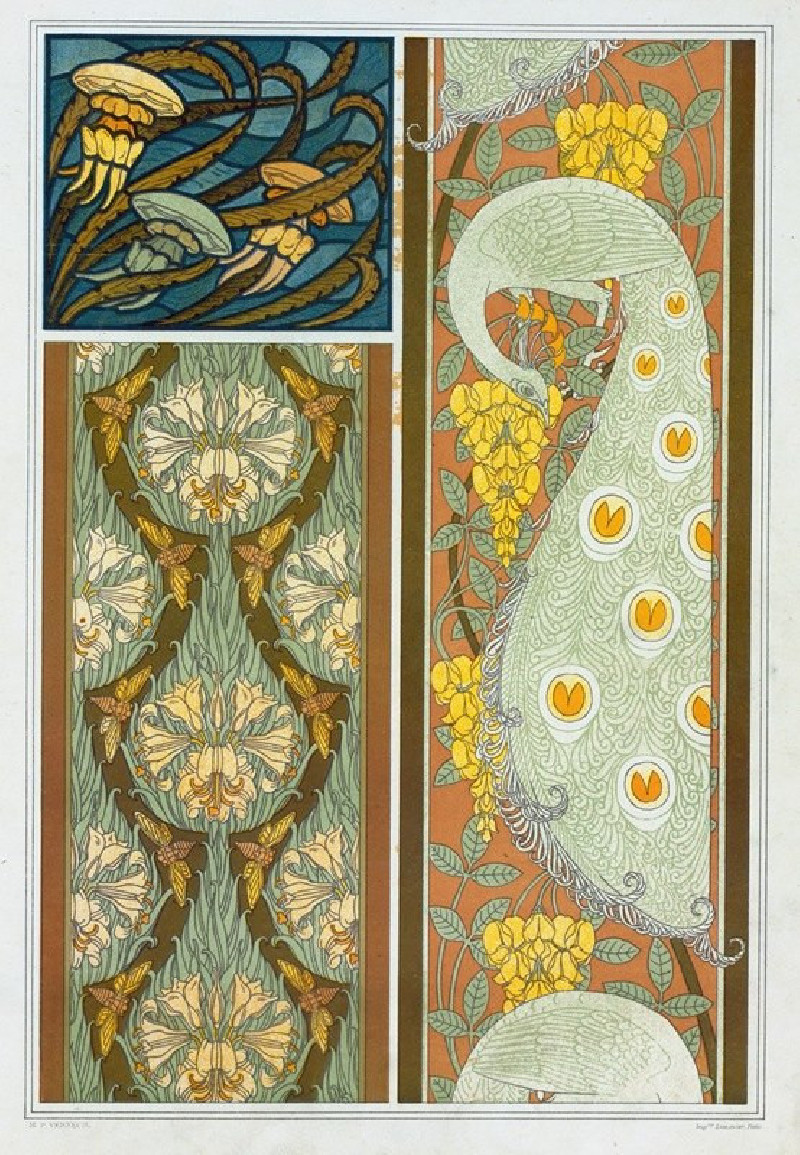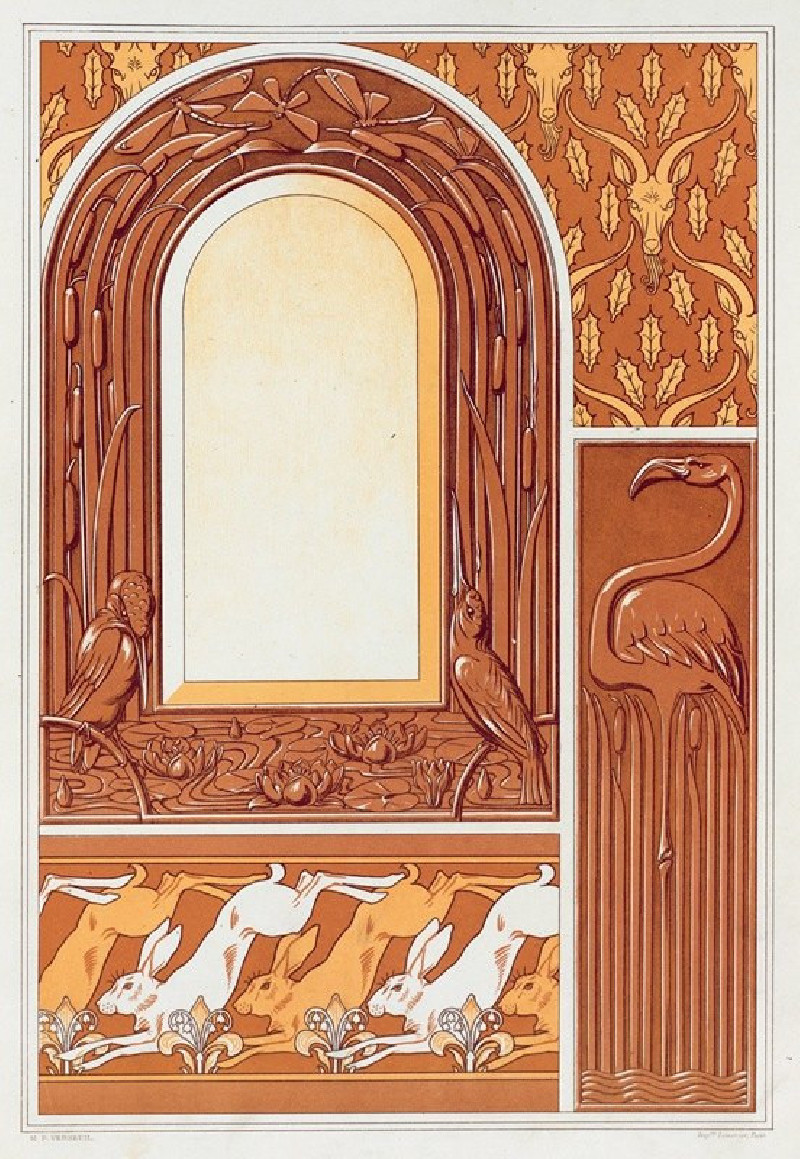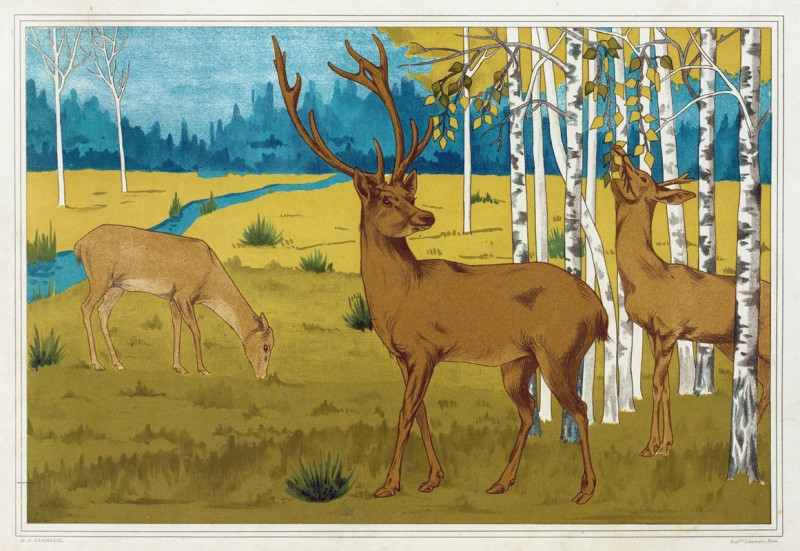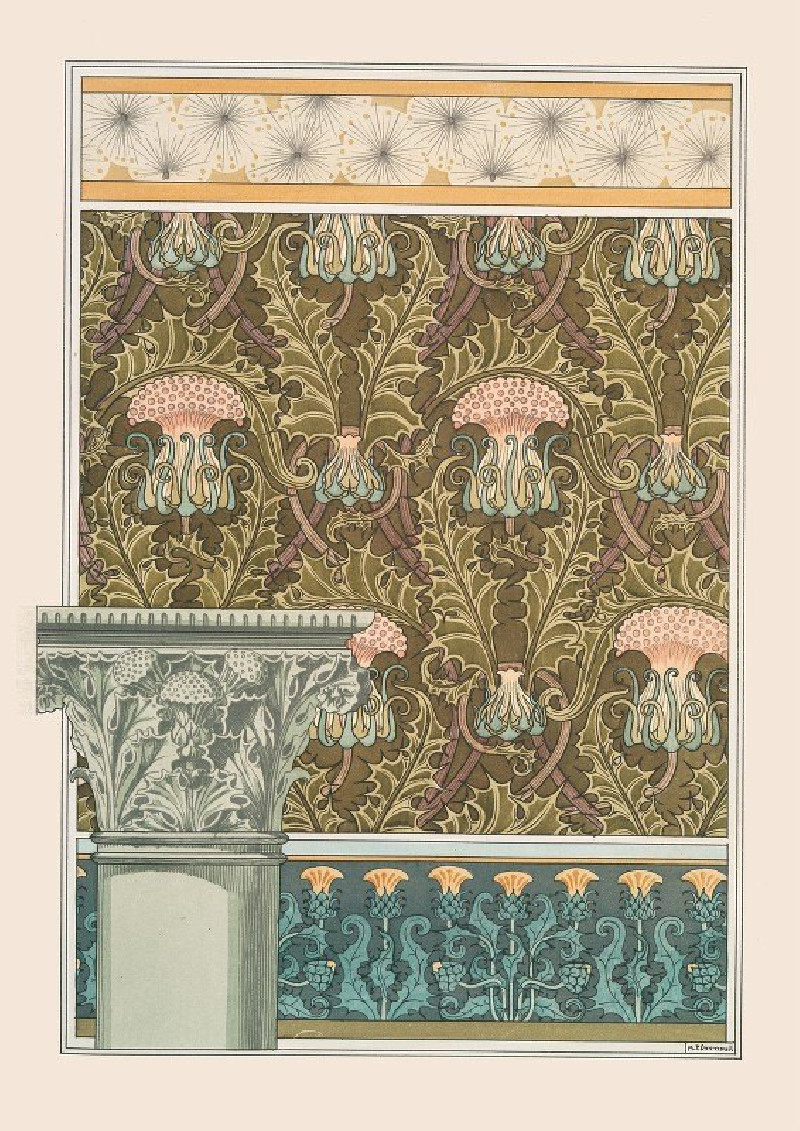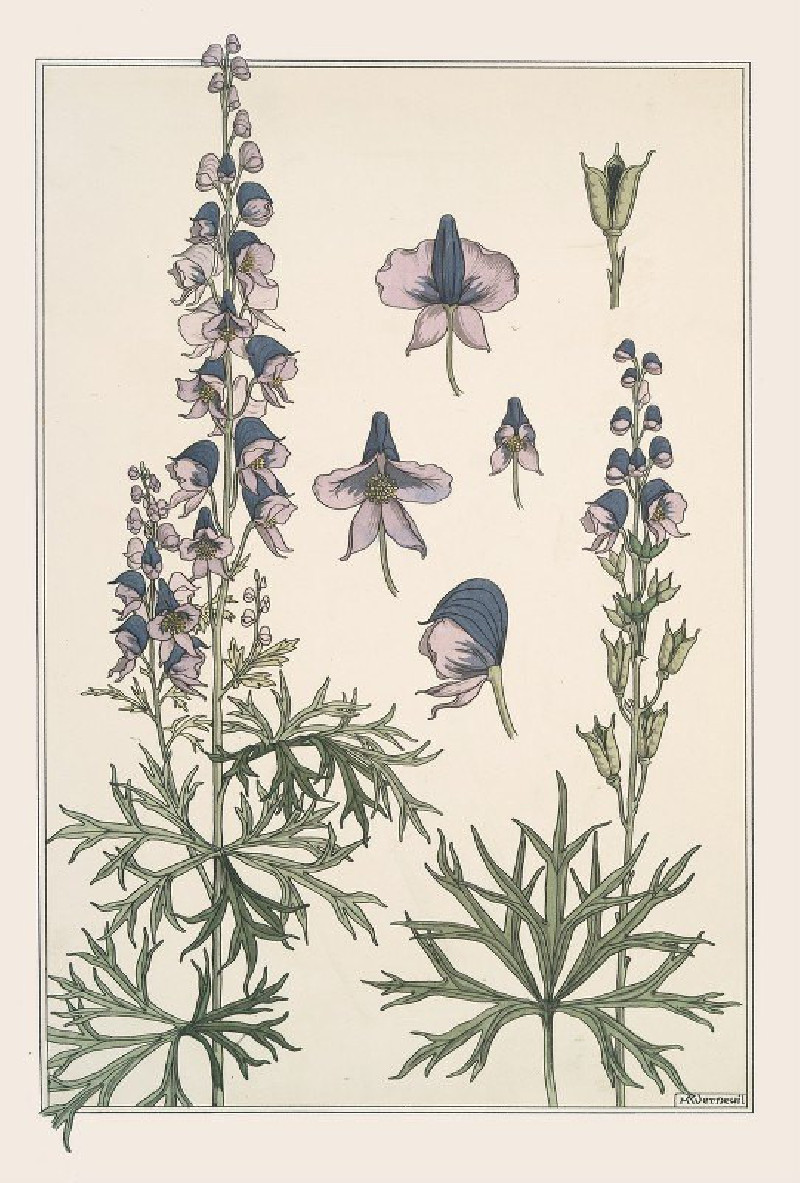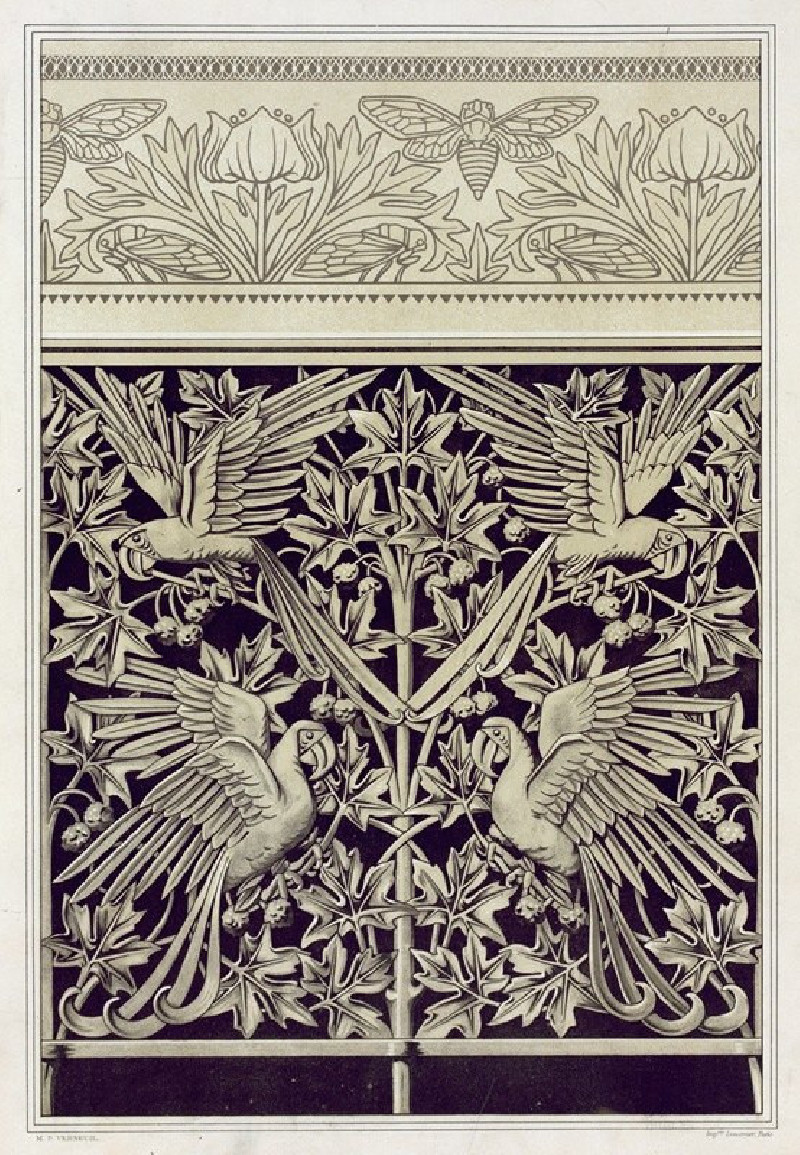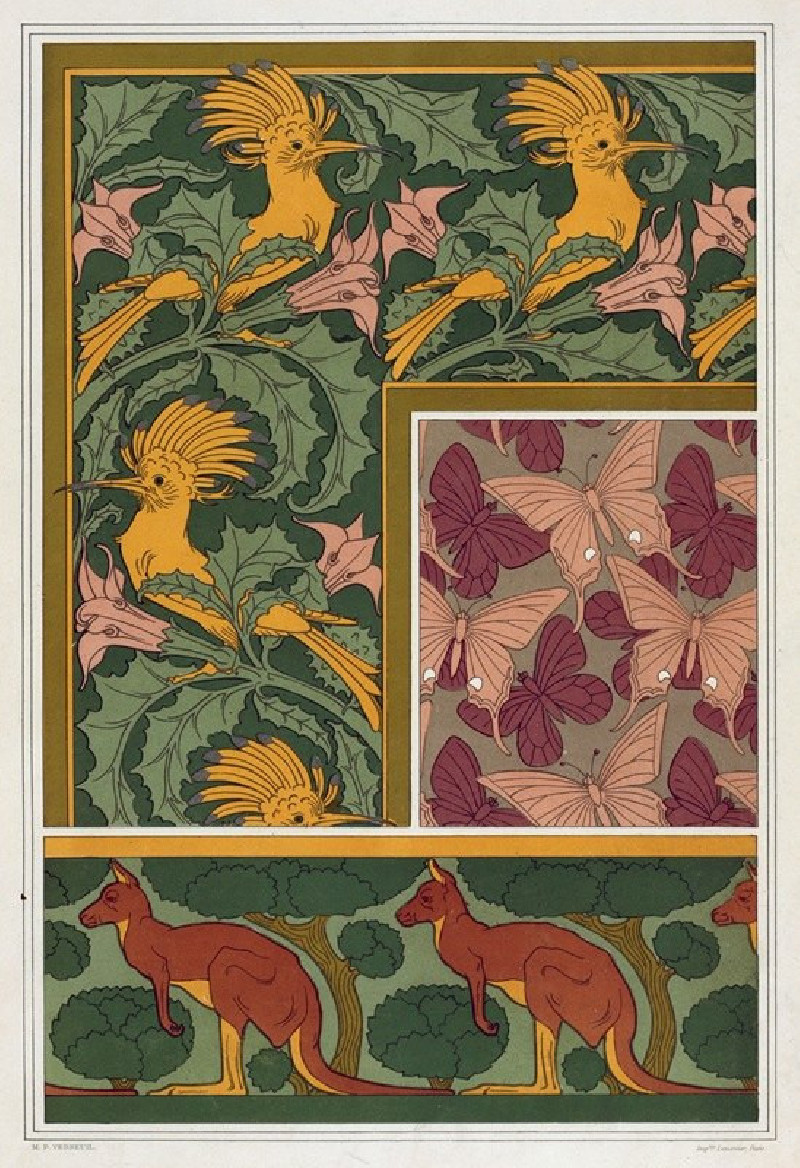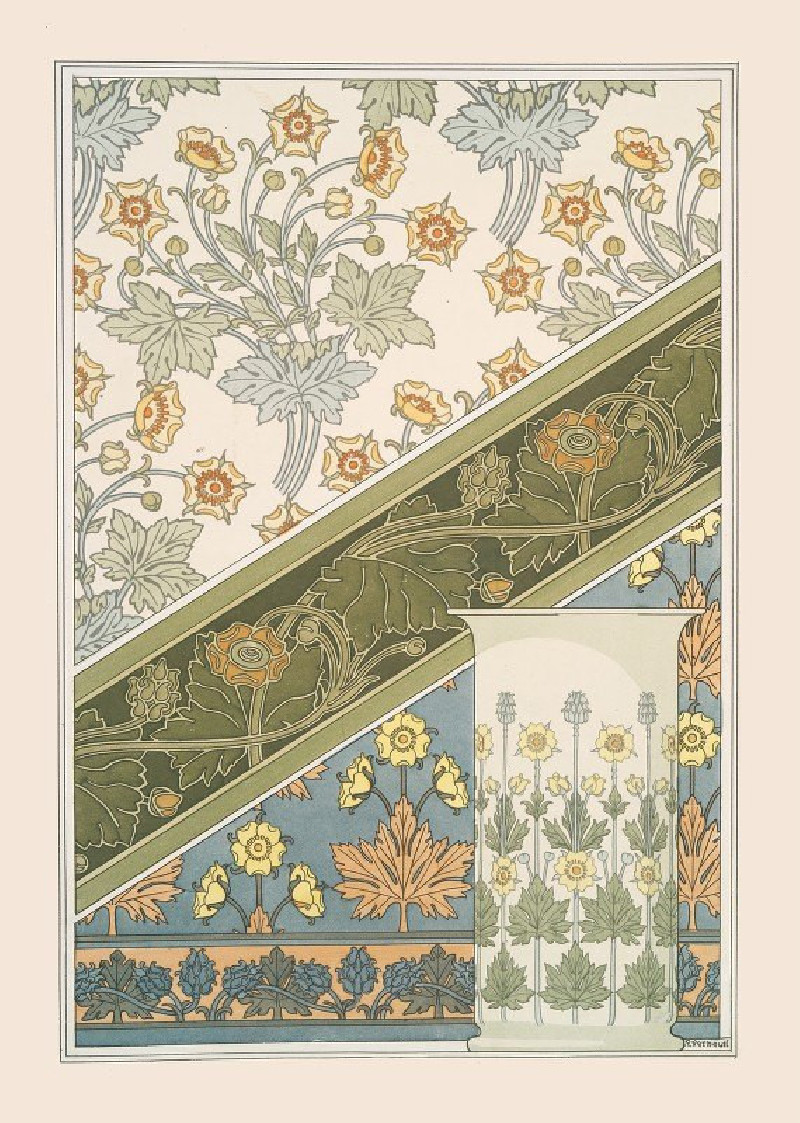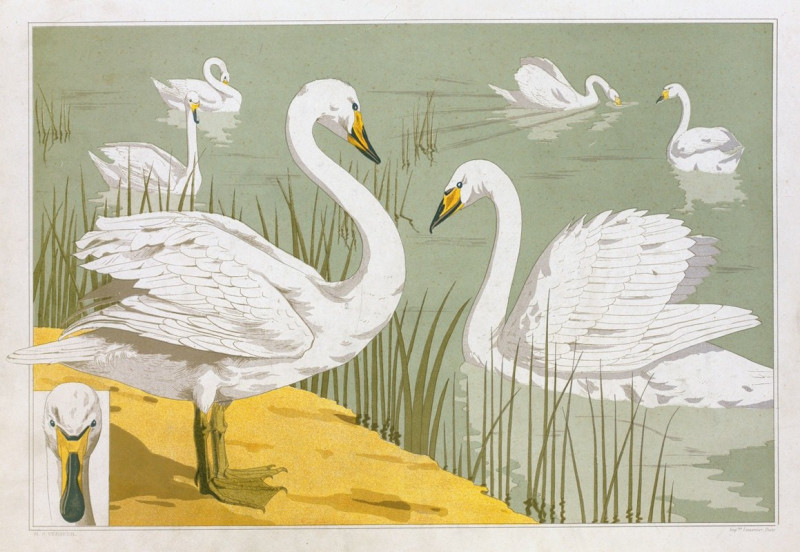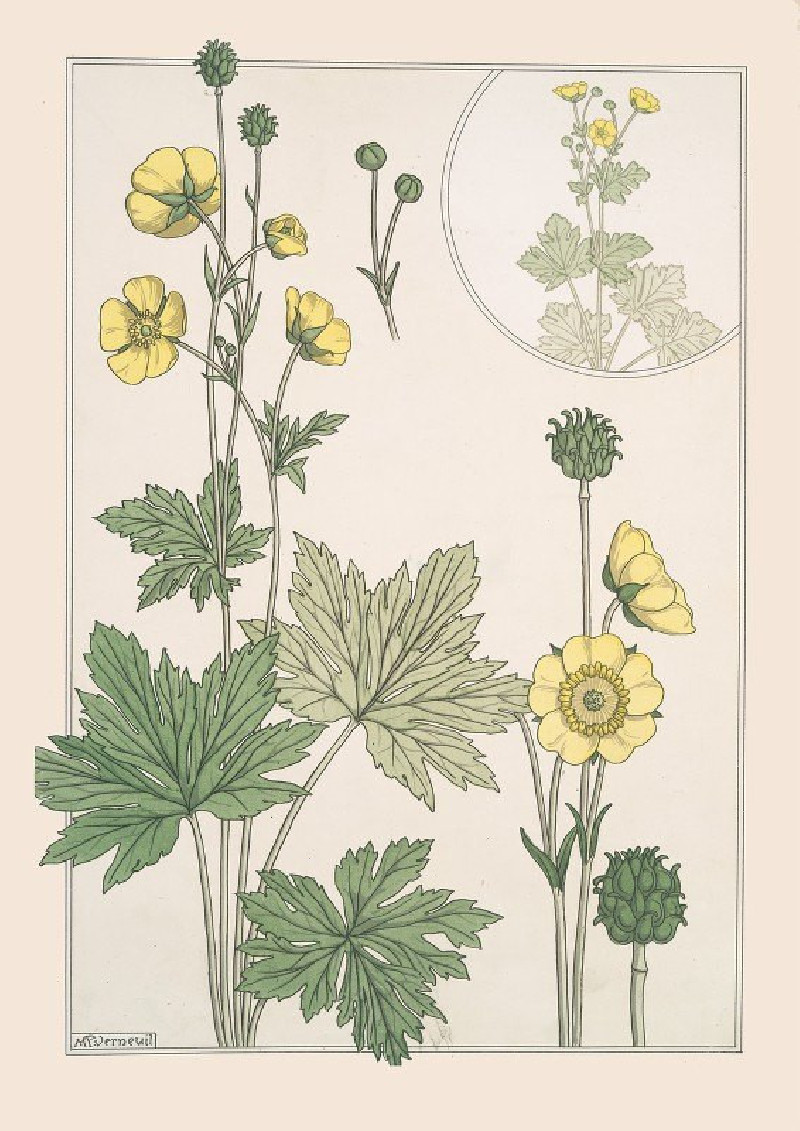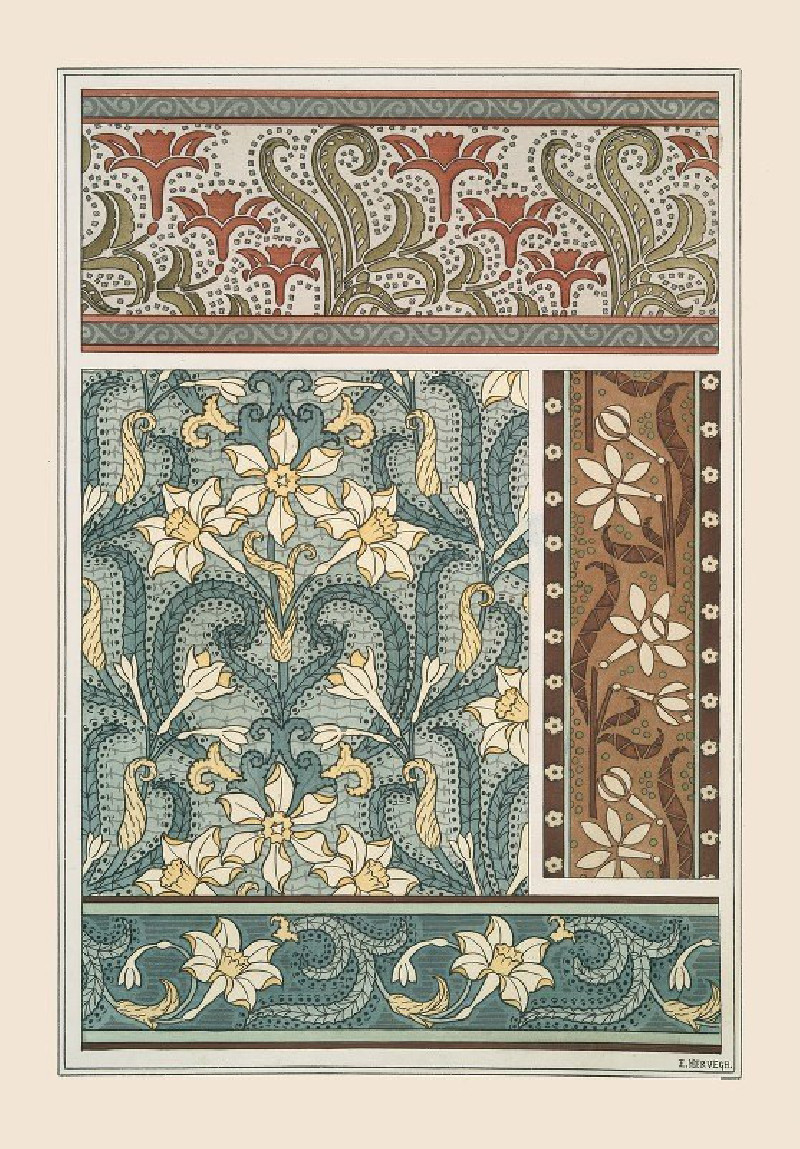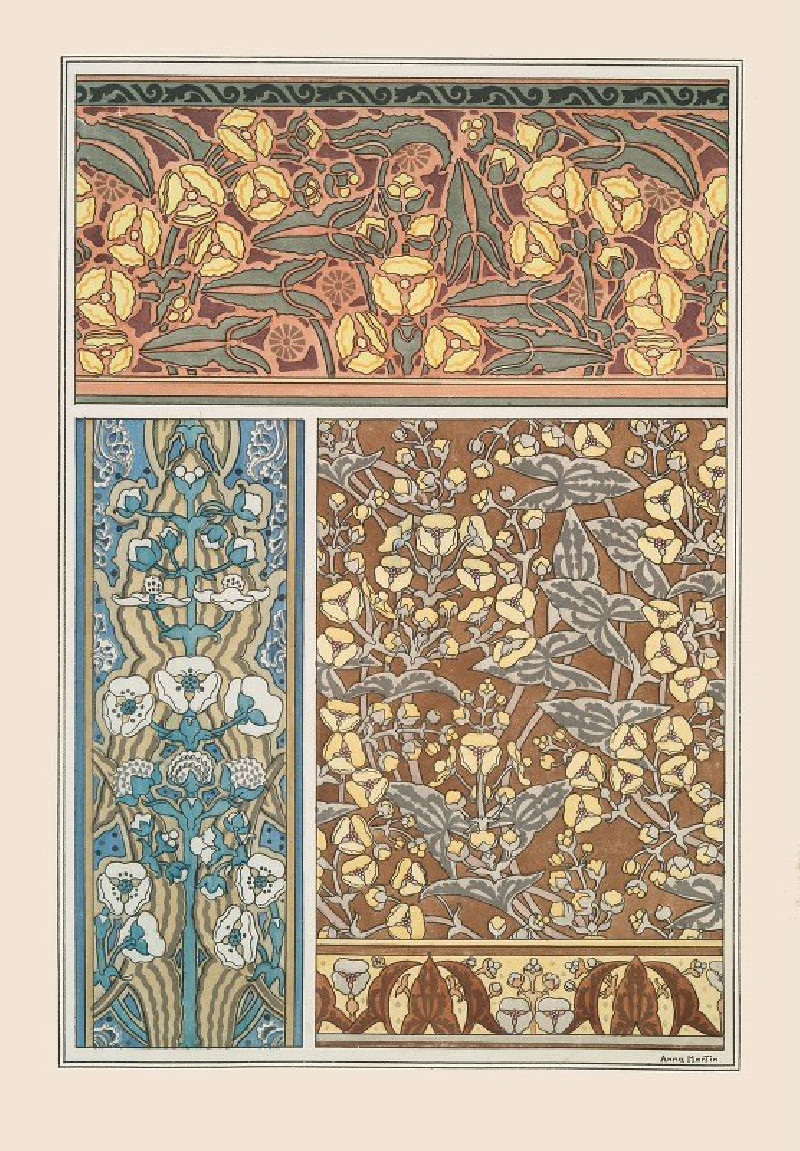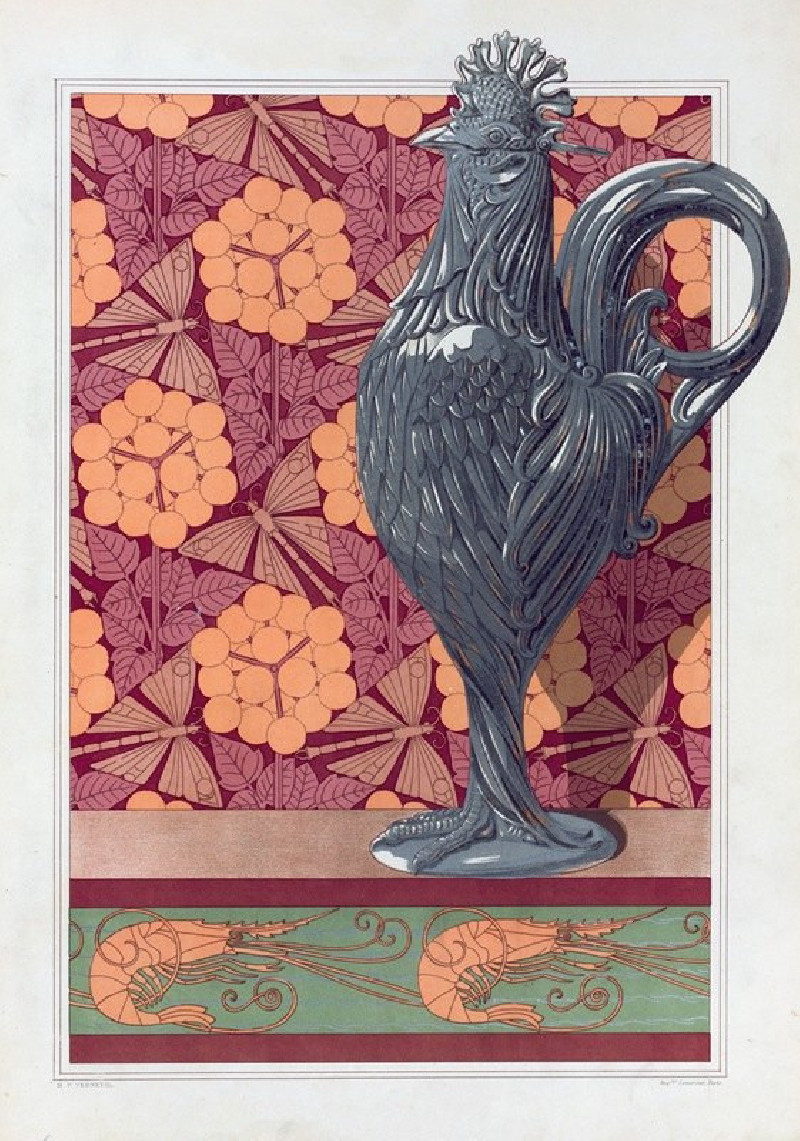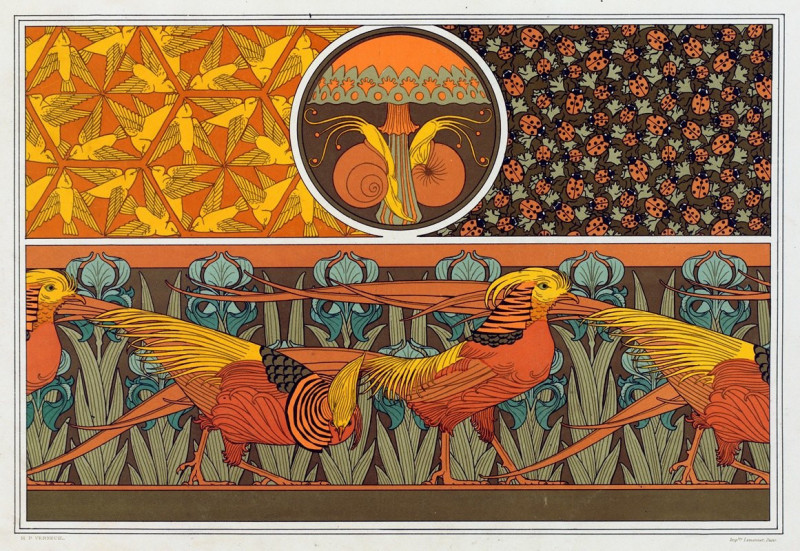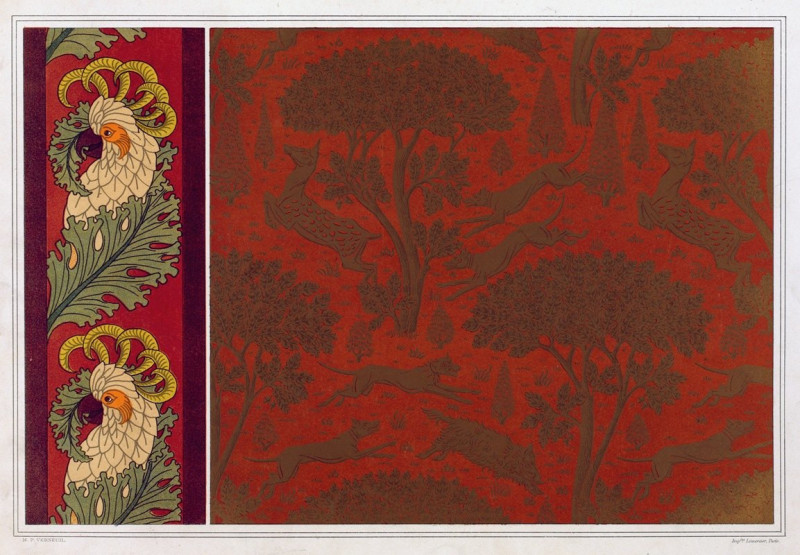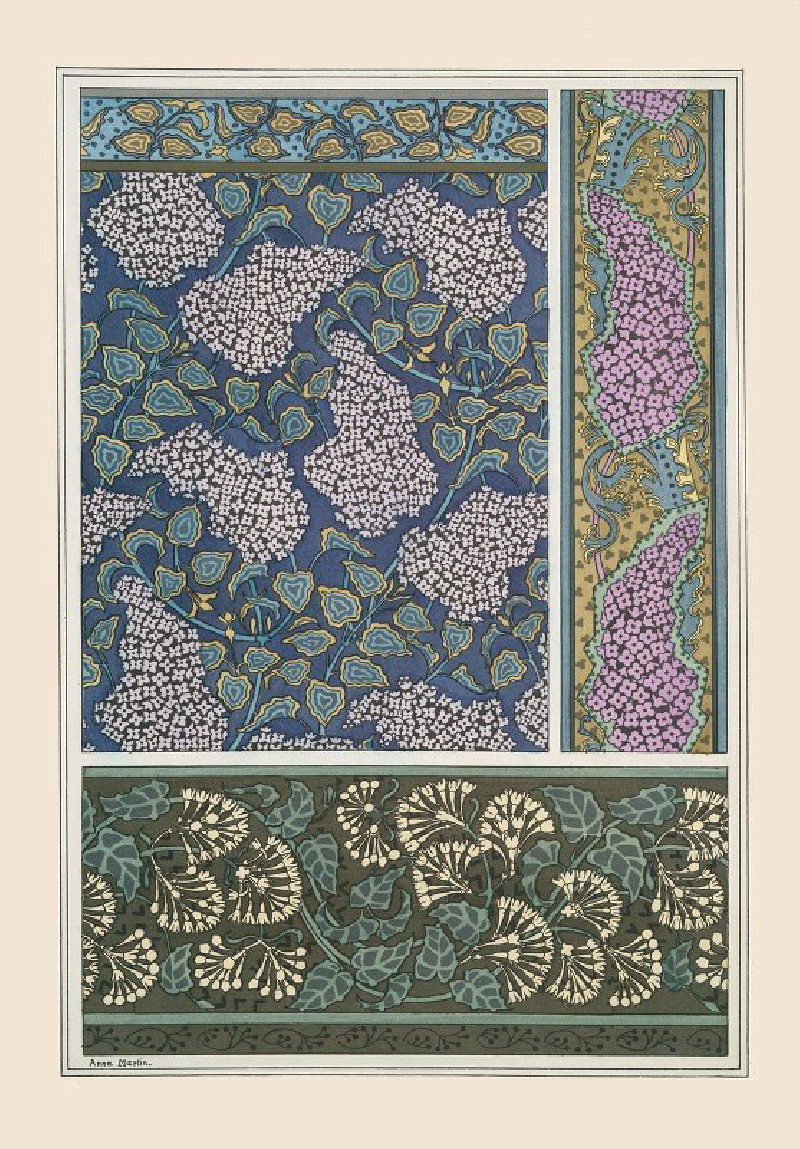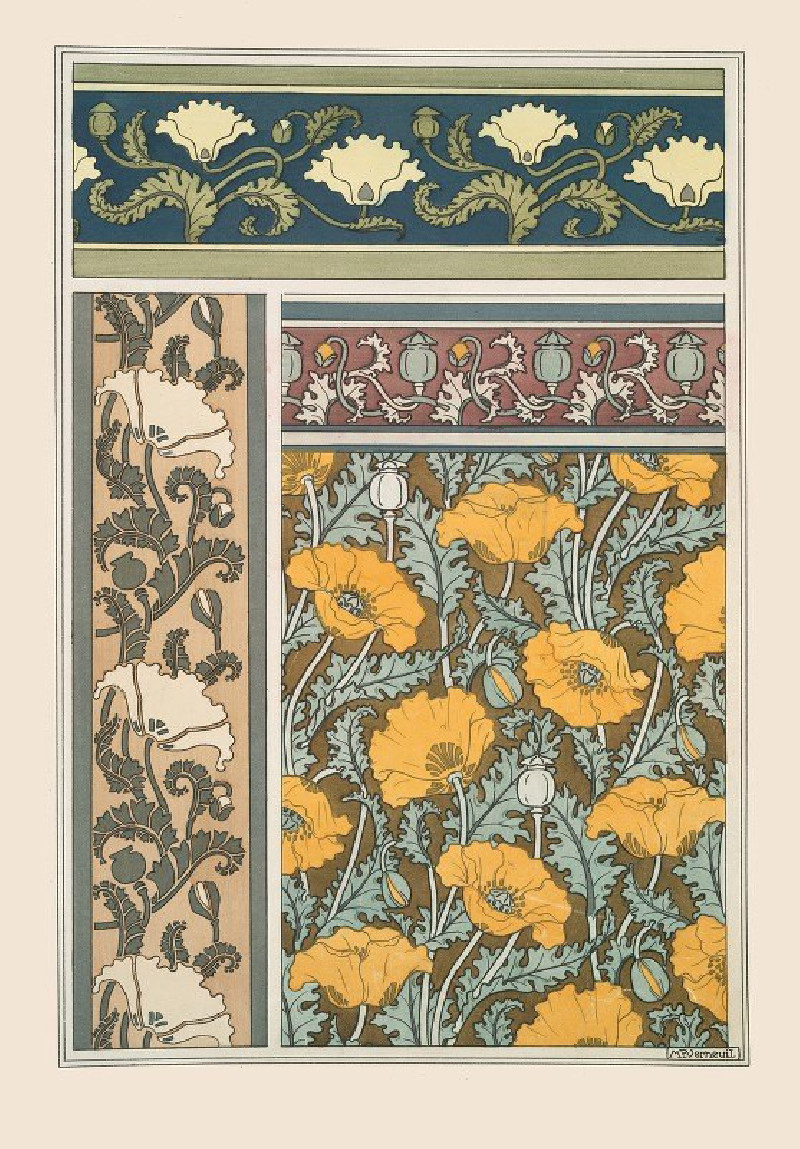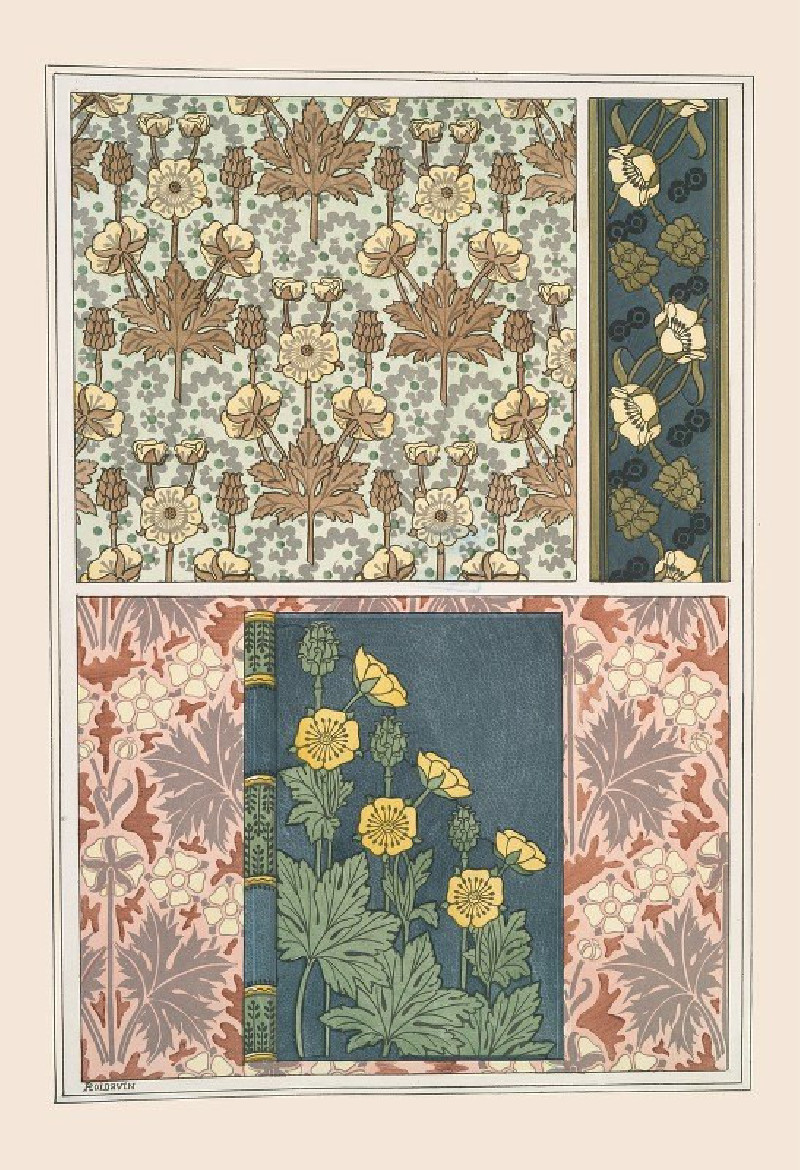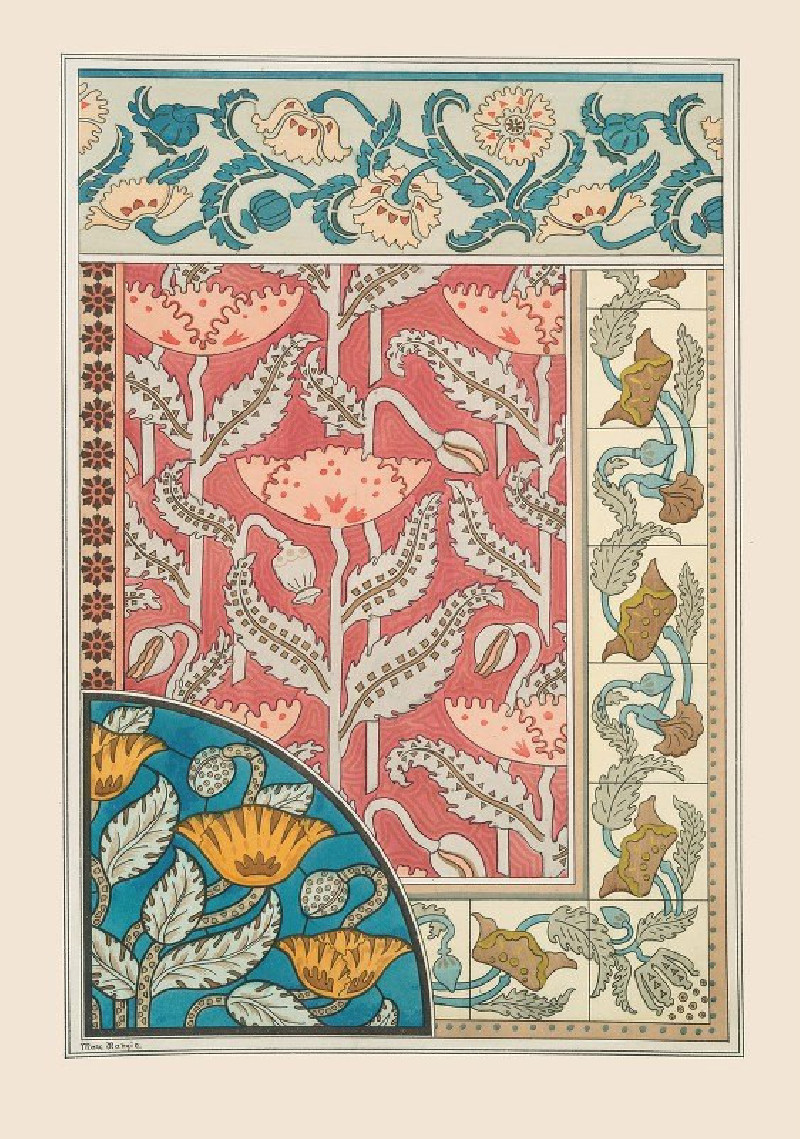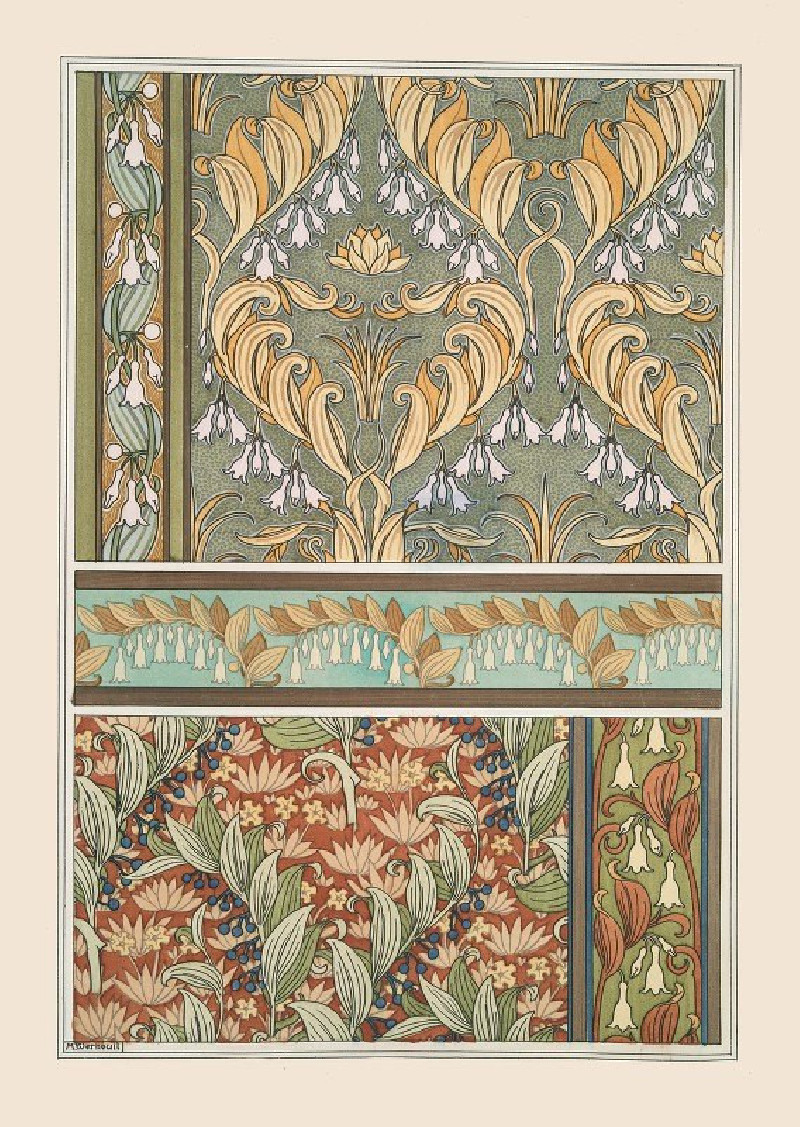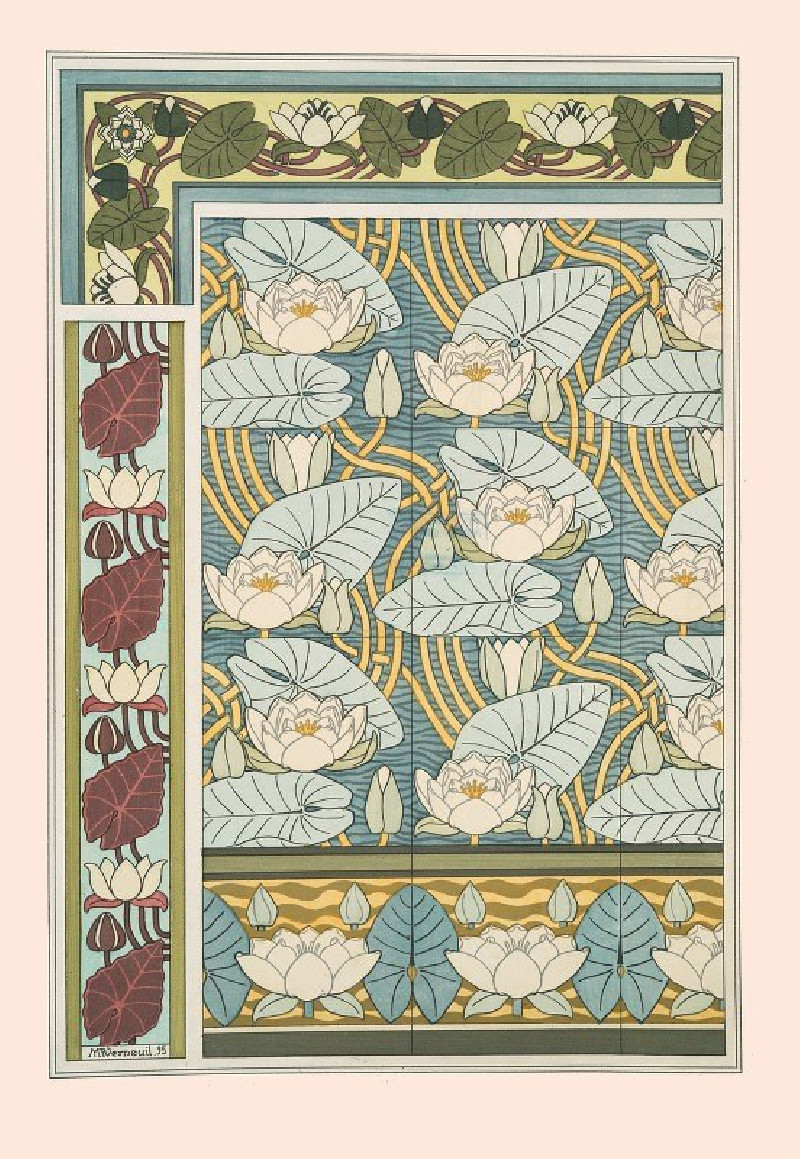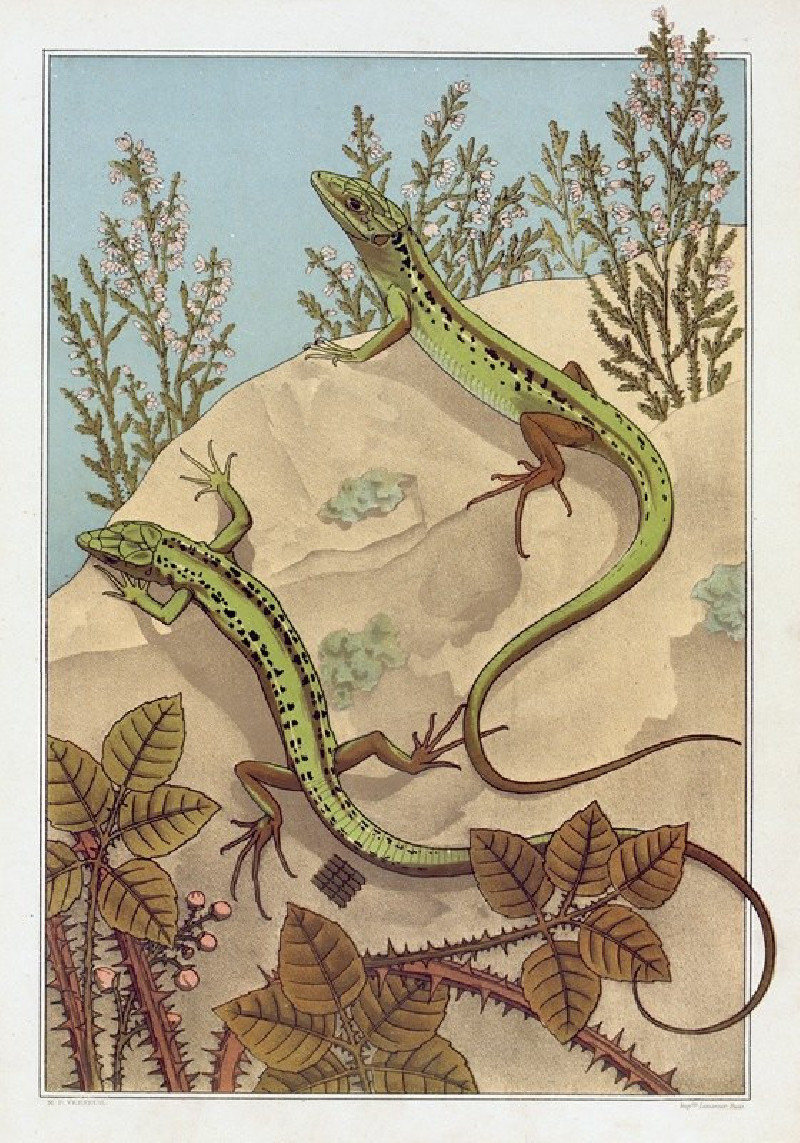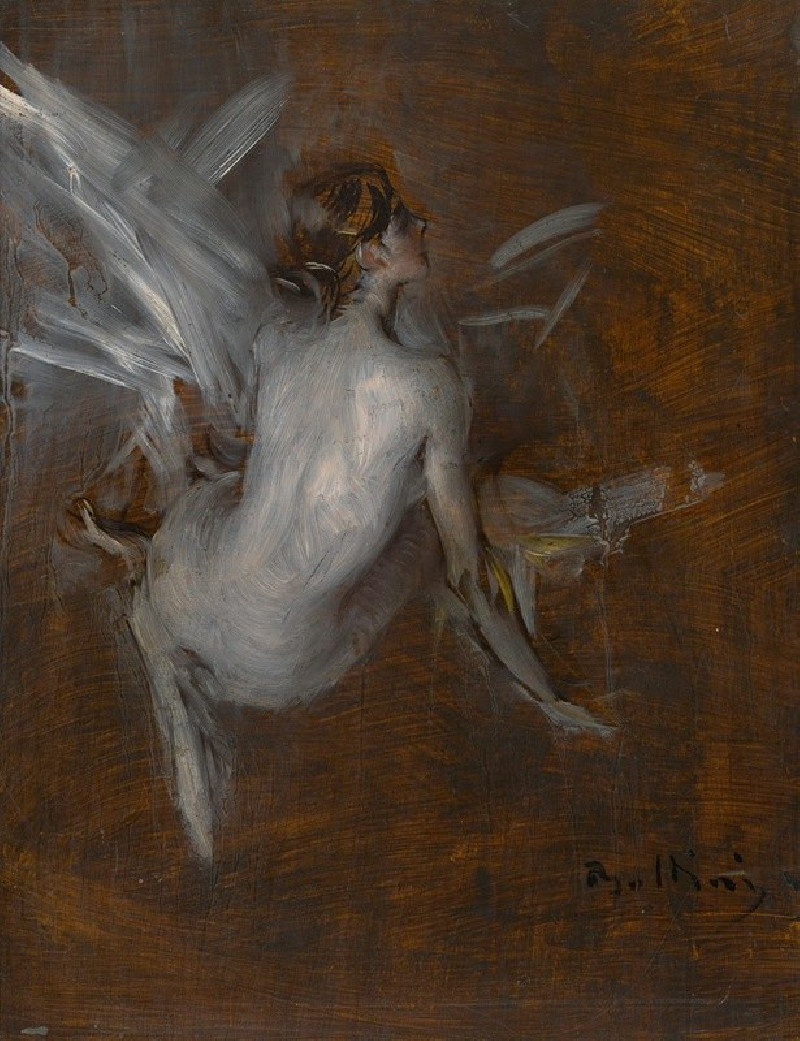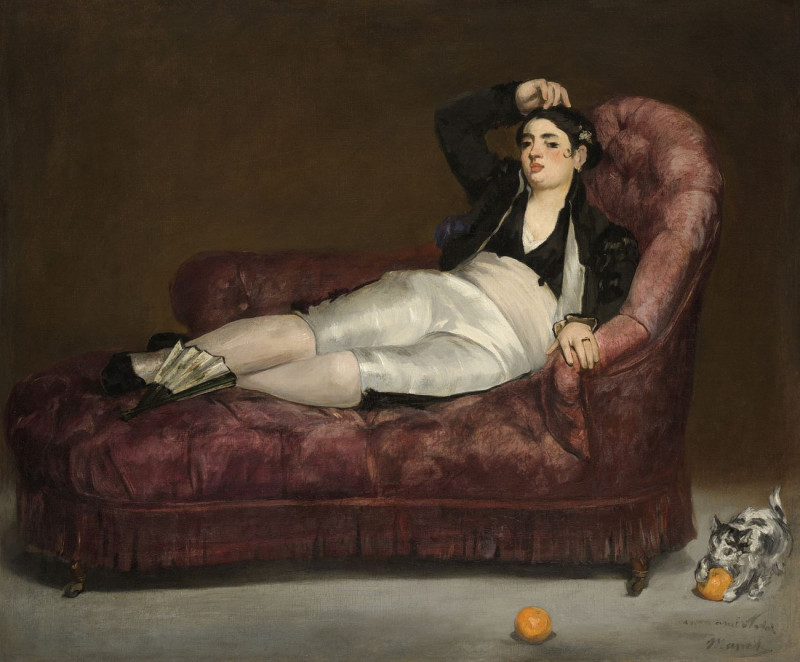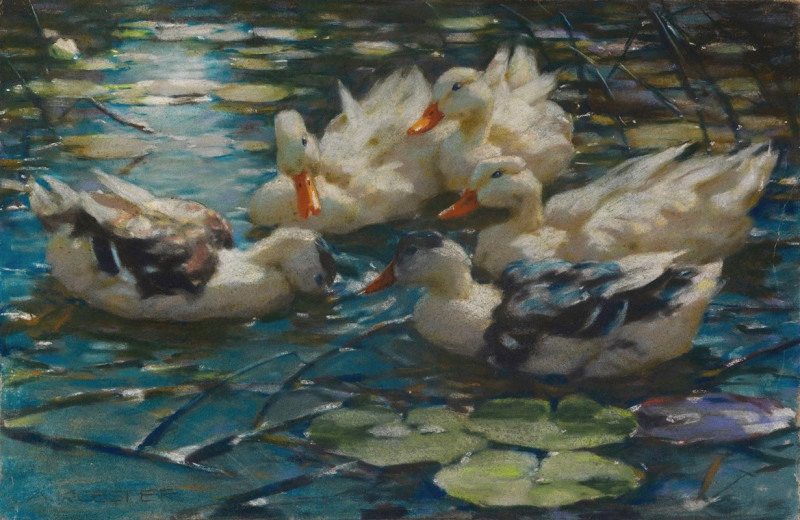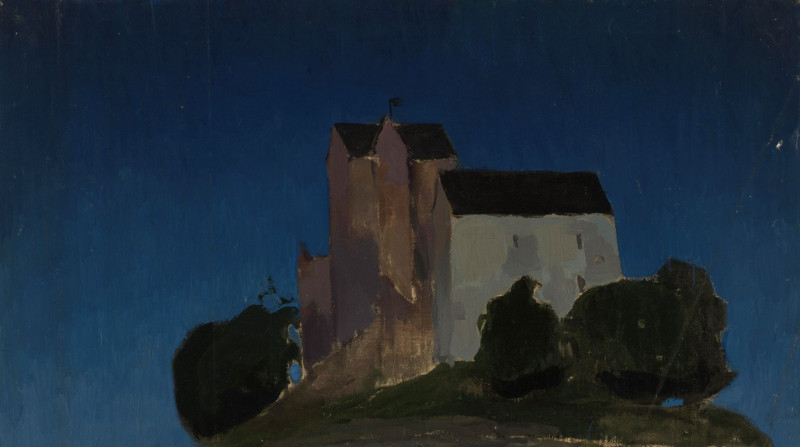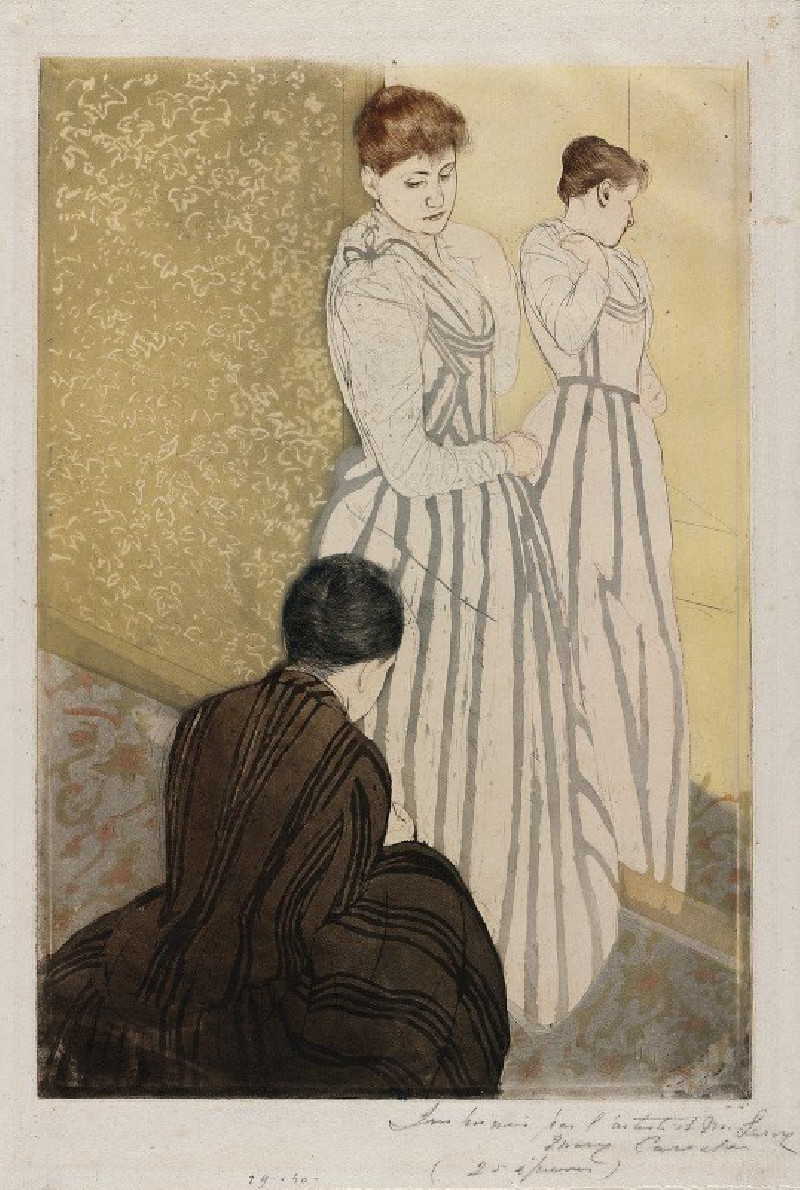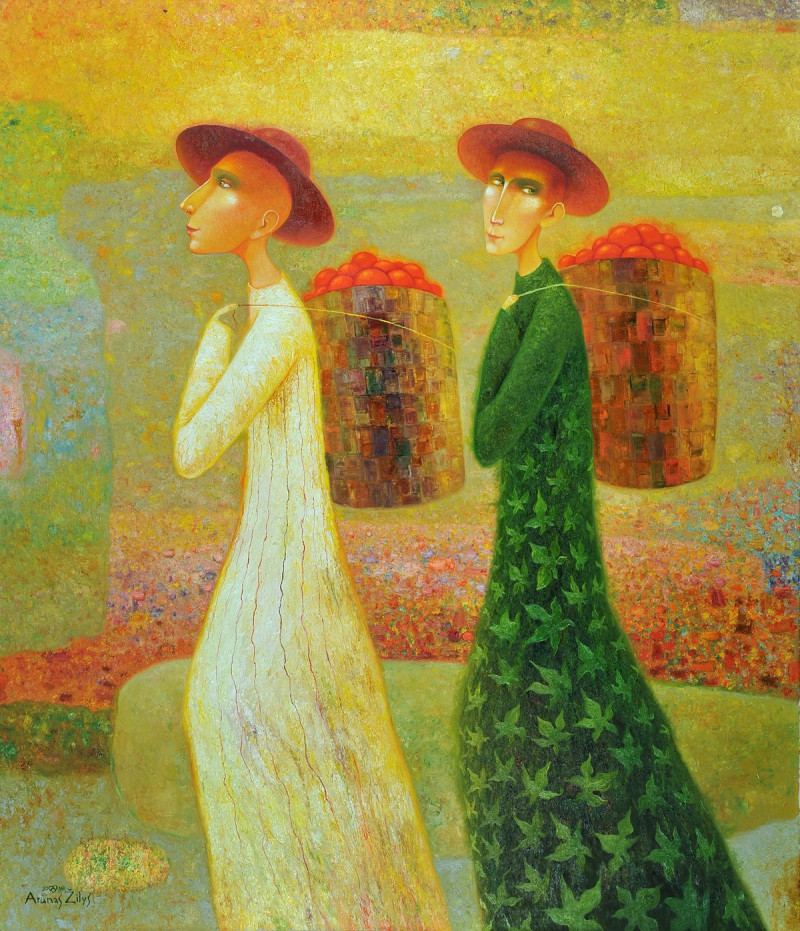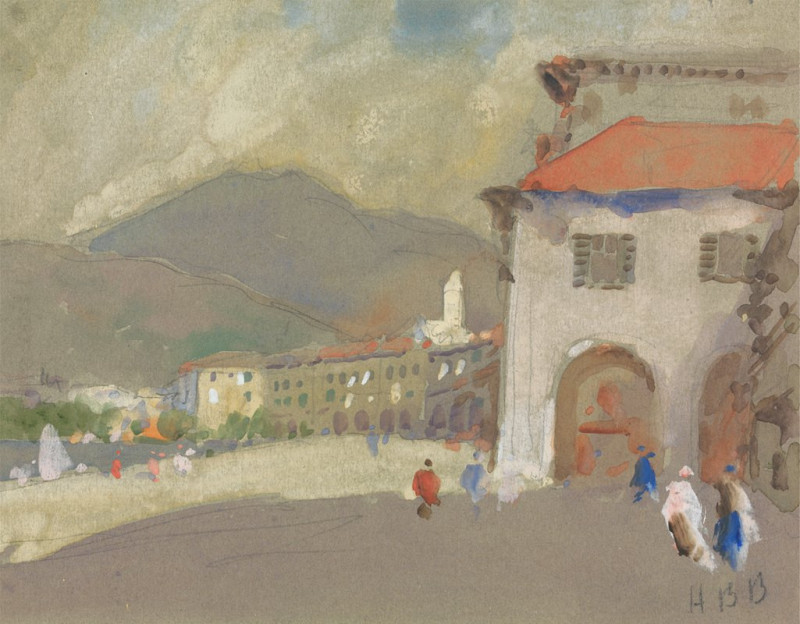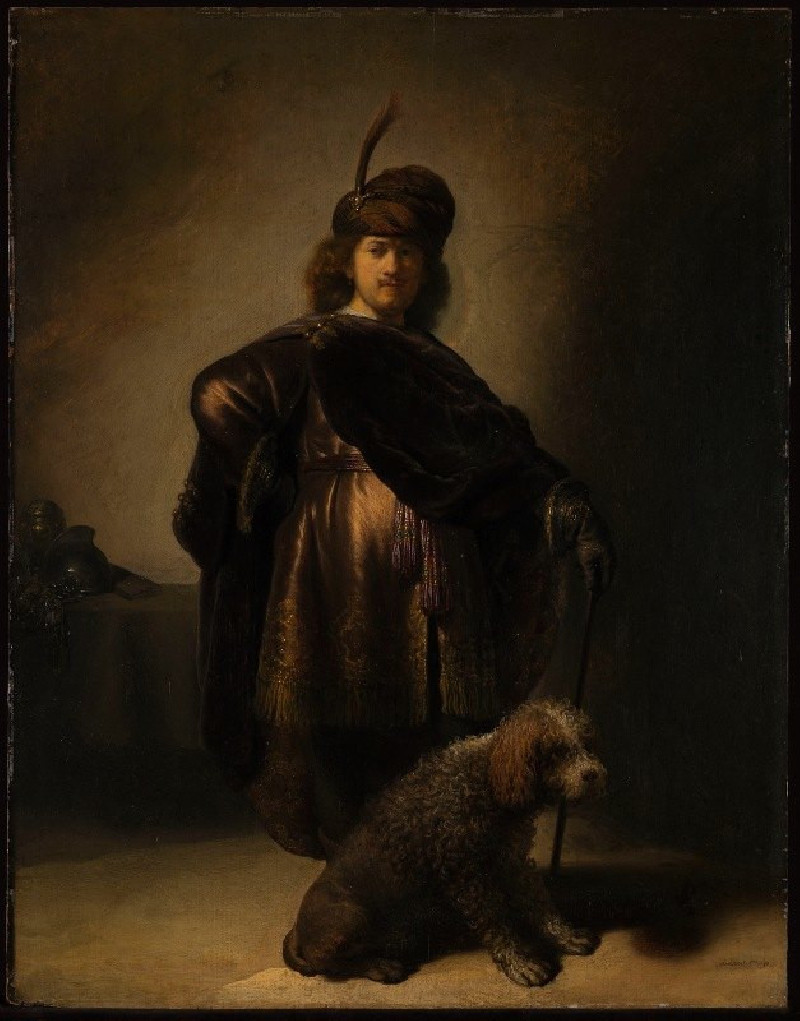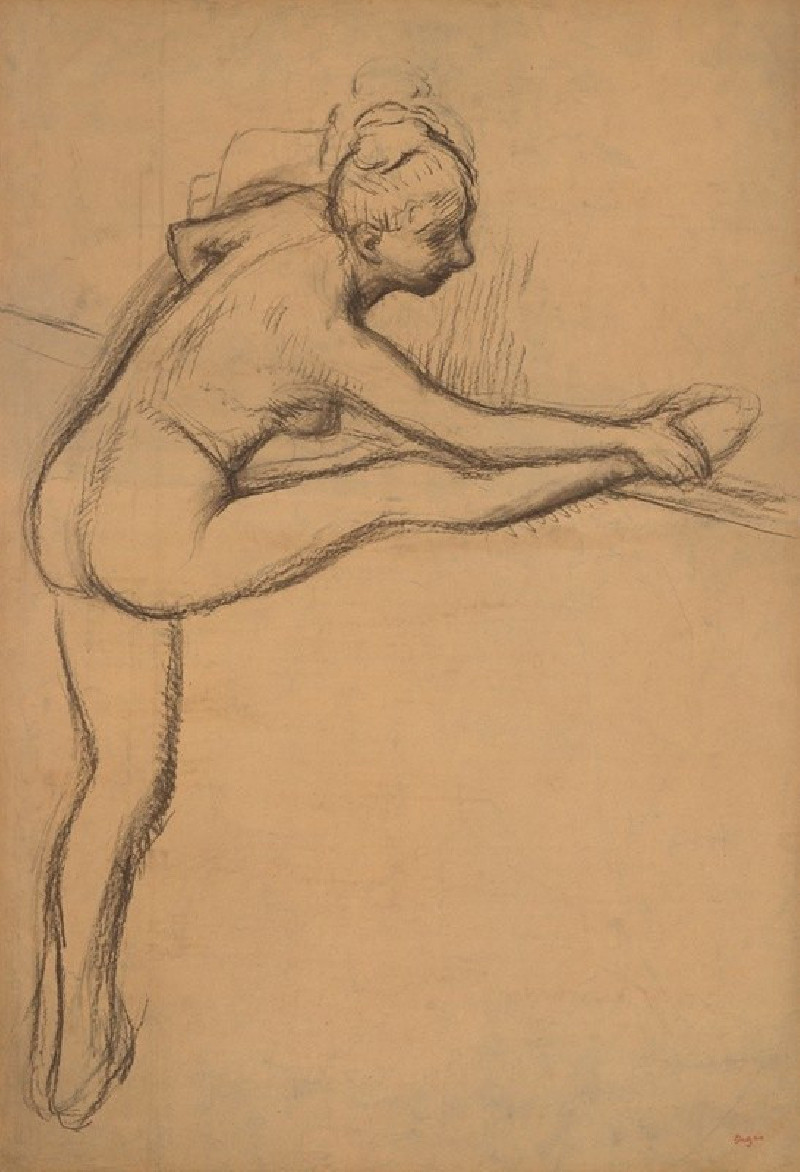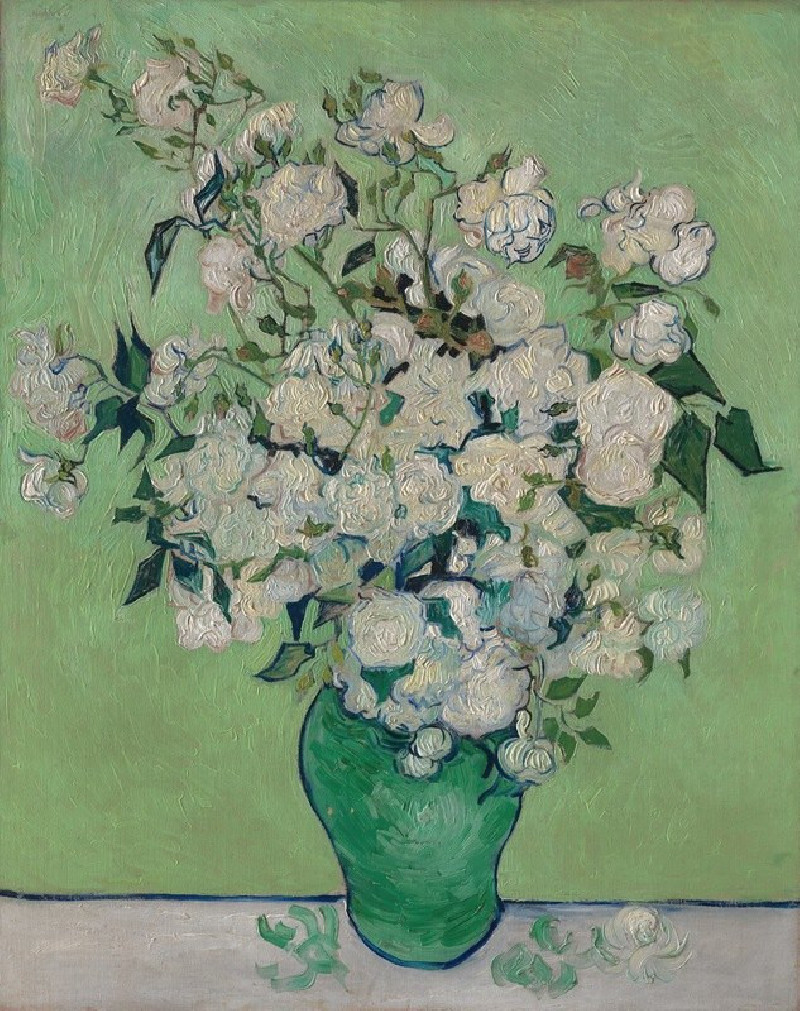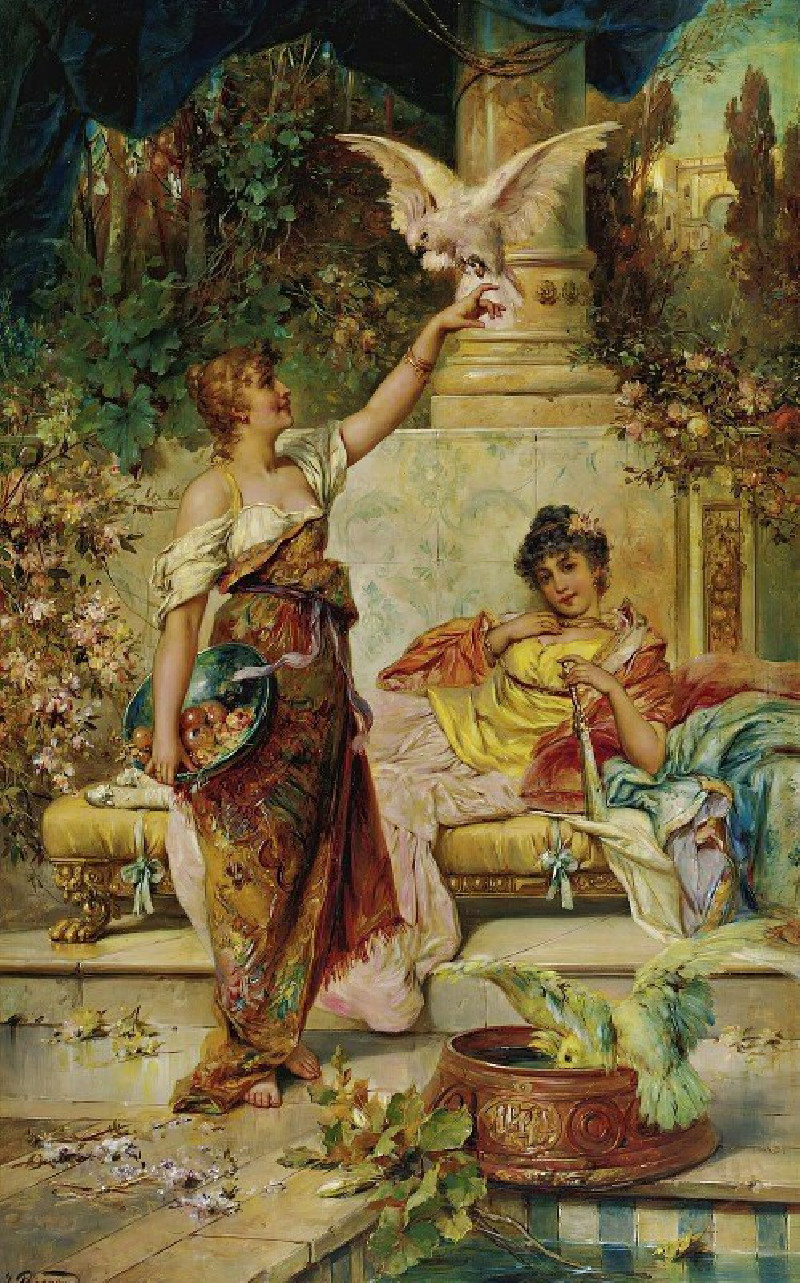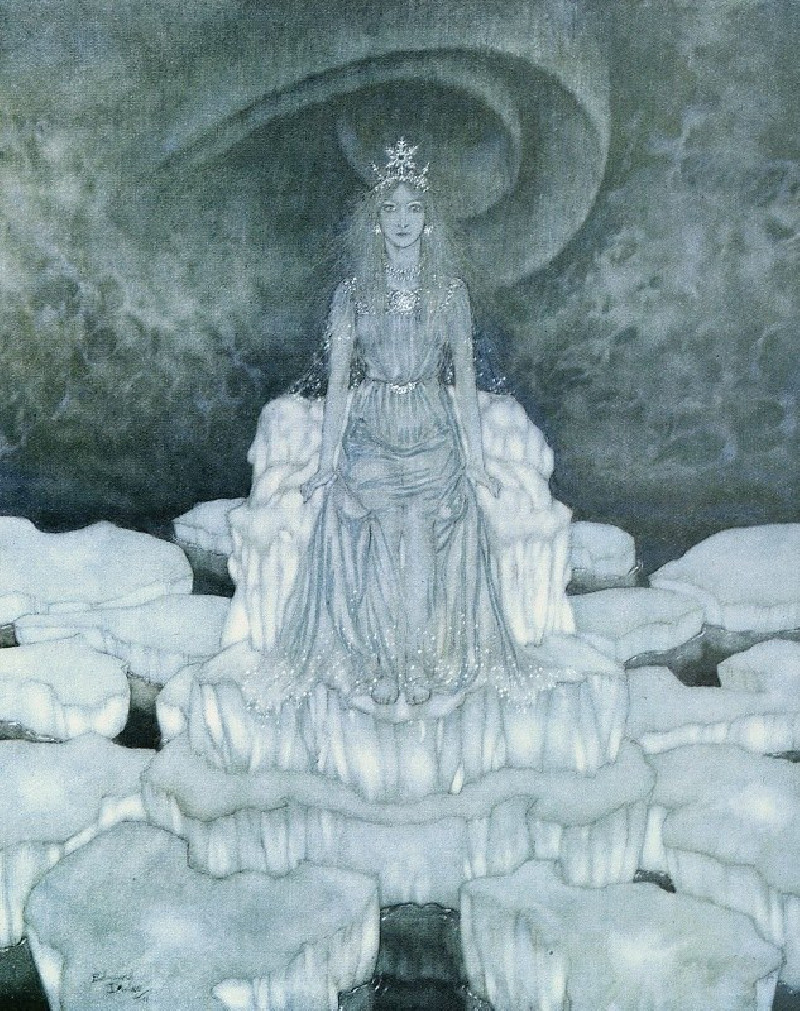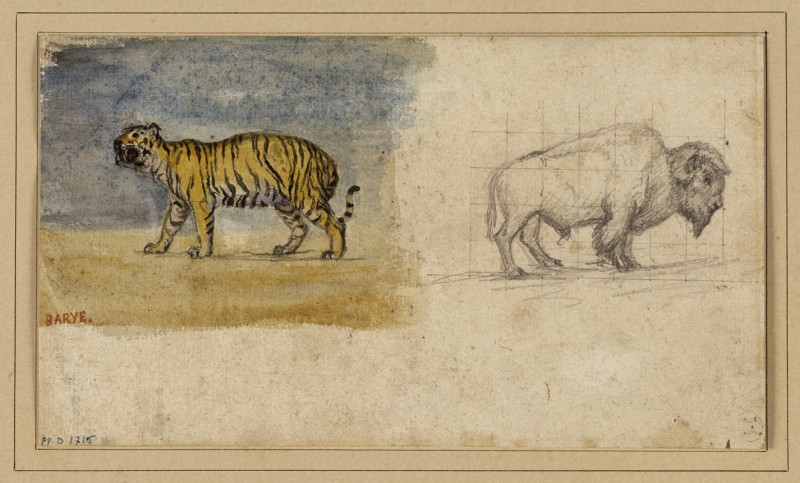Lilas 3 (1896)
Technique: Giclée quality print
Recommended by our customers
More about this artwork
Maurice Pillard Verneuil's "Lilas 3" is a captivating exploration of nature's intricate patterns through the lens of Art Nouveau design. Created in 1896, this painting showcases Verneuil's proficiency in using flora as a primary source of aesthetic expression.The artwork is divided into four distinct panels, each portraying a unique interpretation of the lilac theme. The top left panel features a symmetric arrangement of lilac flowers entangled in an ornate, geometric lattice that subtly hints at the influence of Islamic and Moorish patterns. The color palette is restrained, focusing on blues, golds, and greens which harmonize to evoke a tranquil and orderly nature.Adjacent to it, the top right panel bursts with a more naturalistic depiction, where lilac blooms are densely packed against a deep green background, providing a lush, verdant context that contrasts with the more stylized panel beside it.The lower left panel dramatically shifts to a monochromatic scale, emphasizing texture and detail. It resembles a delicate lacework, intricately woven to depict the fine details of lilac blossoms and leaves, showcasing Verneuil's attention to the subtleties of form and shadow.The final panel on the lower right continues the theme with lilac flowers set against a stiff, structured backdrop, again focusing on the interplay between natural forms and stylized, decorative elements."Lilas 3" is a masterful exhibition of Maurice Pillard Verneuil’s ability to blend natural motifs with ornamental design, creating a work that is both a tribute to the natural world and a fine example of Art Nouveau artistry.
Delivery
Returns
Maurice Pillard Verneuil was a French artist and decorator in the Art nouveau movement. He was born in Saint-Quentin, France. Maurice Pillard Verneuil learned his trade from the Swiss designer Eugène Grasset. Maurice Pillard Verneuil then went on to become a well-known artist and designer. He was inspired by Japanese art and nature, particularly the sea. He is known for his contribution to the art deco movement and, in particular, his use of bold, floral designs in ceramic tiles, wallpapers and other furnishing textiles.




